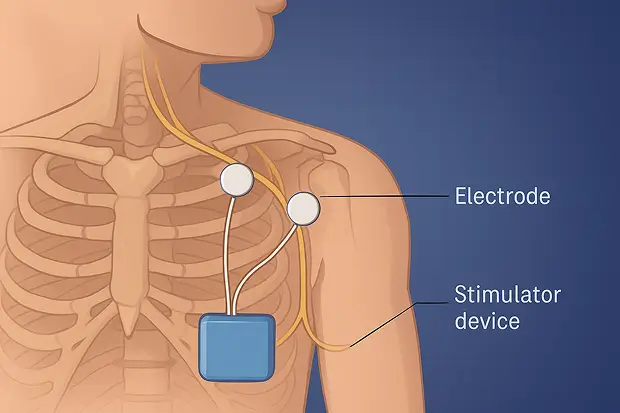A Peripheral Nerve Stimulator (PNS) is a medical device used to manage chronic pain by delivering electrical impulses to specific nerves. This technique is often used when traditional pain management methods, such as medication, physical therapy, or surgery, fail to provide adequate relief. PNS systems typically consist of a small electrode implanted near a targeted nerve, and an external peripheral nerve stimulation device that controls the electrical impulses. The goal of the treatment is to interrupt pain signals, thereby reducing discomfort and improving quality of life.
Reasons for Use
Peripheral nerve stimulators are commonly used to treat a variety of chronic pain conditions, particularly when more conservative treatments have not provided sufficient relief. Common reasons for using PNS include neuropathic pain (such as diabetic neuropathy or post-surgical pain), complex regional pain syndrome (CRPS), and conditions resulting from nerve damage or inflammation. PNS can also help patients suffering from persistent pain following surgeries like joint replacements or spinal procedures, where traditional methods like medication or physical therapy have proven ineffective. In many cases, PNS offers a non-invasive alternative to more invasive surgical treatments, such as nerve ablation.
Types of Peripheral Nerve Stimulators
There are two main types of peripheral nerve stimulators: trial stimulators and permanent stimulators. A peripheral nerve stimulator trial is a temporary device used to assess whether the patient will experience adequate pain relief before committing to a permanent implantation. During the trial, small electrodes are placed near the nerve through a needle, and a portable external pulse generator is used to deliver the electrical impulses. If the trial is successful and pain relief is achieved, a permanent peripheral nerve stimulator implant may be used. Permanent stimulators are designed to be implanted under the skin, typically near the shoulder, and deliver continuous or intermittent electrical stimulation for long-term pain management.

Who Should Get It
Peripheral nerve stimulation is typically recommended for individuals suffering from chronic pain that has not responded to other treatments. Ideal candidates include those with conditions like post-surgical neuropathy, complex regional pain syndrome (CRPS), or chronic back or limb pain. PNS may also be considered for patients who cannot tolerate or wish to avoid long-term opioid use. However, not all patients are suitable candidates. Those with active infections, significant mental health conditions, or poor overall health may not be ideal candidates. A thorough evaluation by a pain specialist is necessary to determine if PNS is the right treatment option.
Possible Side Effects
While peripheral nerve stimulators are generally considered safe, they can cause some side effects. These may include mild discomfort at the site of implantation, temporary soreness, or swelling around the electrode area. In some cases, patients may experience infections, nerve damage, or device malfunction. Additionally, some people report a sensation of tingling or an “electric shock” feeling from the stimulator, which can be uncomfortable. There’s also a risk that the stimulator may become dislodged or move from its original position, requiring additional procedures to correct. However, these side effects are generally rare, and the majority of patients find the procedure to be well-tolerated with minimal complications.
How does peripheral nerve stimulation work
The procedure for implanting a peripheral nerve stimulator typically begins with a trial phase to determine if the patient responds well to electrical stimulation. During the trial, a needle is used to place small electrodes near the target nerve, and an external pulse generator is connected to deliver electrical impulses. The trial lasts several days to a week, with the patient closely monitoring pain relief. If the trial is successful, a minor surgical procedure is performed to implant the permanent device. This procedure is usually done under local anesthesia with mild sedation, and the permanent electrode is placed near the nerve. A small incision is made to insert the pulse generator under the skin, and the stimulator is programmed to provide optimal pain relief. The entire process typically takes one to two hours, depending on the complexity of the implantation.
Recovery
The recovery time following peripheral nerve stimulator implantation varies from patient to patient, but most can expect a recovery period of a few weeks. Immediately after the procedure, patients may experience some swelling, bruising, or discomfort at the implantation site, which typically subsides within a few days. During the first few weeks, patients are advised to avoid strenuous activities or heavy lifting to allow for proper healing. Follow-up appointments with the physician are crucial to ensure the device is working correctly and to adjust the settings for optimal pain relief. Most individuals can resume their normal activities after a few weeks, although it may take several months to fully adjust to the device and experience the maximum benefits in pain reduction. Regular monitoring and device checks are necessary to ensure the stimulator continues to function as intended.



